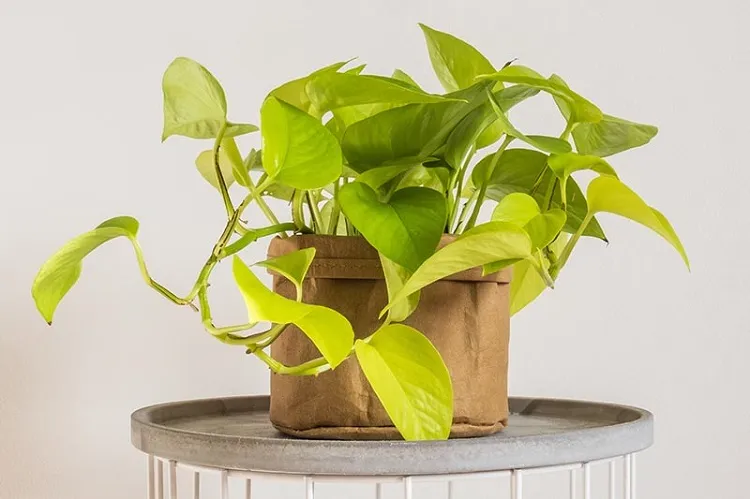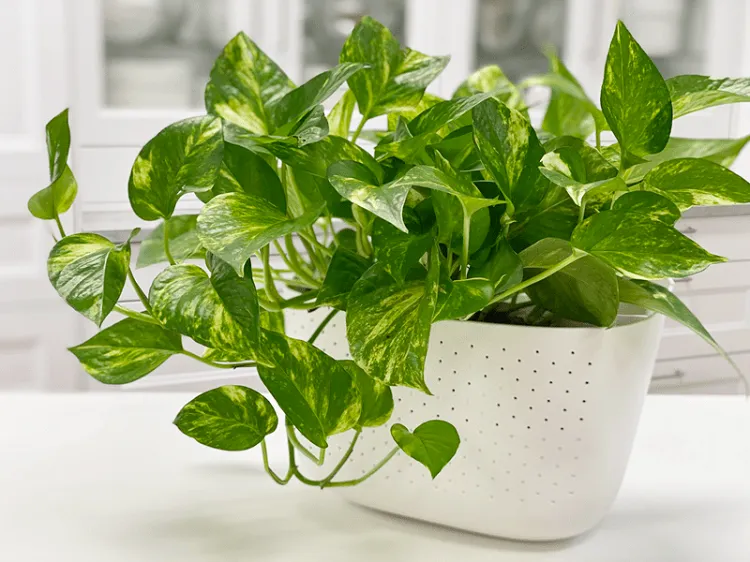Pothos, with its cascading vines and heart-shaped leaves, is a beloved indoor plant for homes and offices. But it is vulnerable to stress and have a specific way to show it, especially when it suddenly begins to turn its leaves in yellow and other pale tones. Can you discover what is the reason for such a reaction? Let’s look through the possible deficiencies or excesses of the environment, from which it suffers that lies behind this behavior, and see what should be restored to bring it back to life.
What Does It Mean When Your Pothos Leaves Turn Yellow?
Why are pothos leaves turning yellow, is the question, answering to which you’ll know how to proceed with this issue and build your action plan to save it. The fading of the plant can be a symptom of diverse issues. Sometimes it’s a result of natural aging, and if not, this can show a more alarming problem. Plant’s aging, one of the possible reasons, is a natural process when the older leaves on its base become yellow and finally drop off following the natural life development. Pale leaves may also due to watering issues. Overwatering and underwatering exhibit in similar way and can be indicated by yellowish coloring. Moist soil may cause root rot, which is seen as yellowing leaves. Alternatively, the plant fades if it isn’t receiving enough water. Light intensity is another possible problem. Pothos are able to survive in a diversity of light conditions, but too intensive sunlight can lead to stress. Constant exposure to direct and focused sunlight can scorch the leaves, while at the same time, absence or poor light can result in yellowish and weak growth.
Why are Pothos Leaves Turning Yellow in Terms of Deficiency?
It’s evident that environmental factors like sunlight and soil moisture may lead to pale color of pothos leaves, but a lack of nutrition can have the same effect:
- Deficiency of nitrogen: One of the important signs of an insufficient nitrogen is when older leaves turn yellow.
- Not sufficient magnesium: This is often exhibited as yellow color between the leaf veins.
- Iron deficiency: Yellowing, which appears on new leaves, particularly if the veins are green, is in most cases a sigh of a lack of an iron.
- Potassium insufficiency: Yellow or brown stains at the tips and edges of leaves, is often an indication that the potassium is not enough.
What to Do When Pothos Leaves Turn Yellow?
If you observe that the foliage on your plant change its color, becoming more and more pale, you begin to wonder why are pothos leaves turning yellow, and how you could restore their health. Whatever is the reason, this action plan will be beneficial to save the plant:
- Examine the soil: The first measure is to feel the soil, and if it’s too wet, you’ve probably poured too much water on it. But if you feel it dry on depth, the issue seems to be in the underwatering.
- Check the light conditions: If your plant has been under direct sunlight for long periods, you should move it to a spot with indirect light or partial shadow. When it grows in some dark corner, promptly find a more sun-lit place.
- Look it through for pests: Aphids, mealybugs, and spider mites can also lead to yellowing. So, check the plant carefully for the presence of pests.
- Prune the pale leaves: Gently prune the yellowish or damaged leaves to support the plant to save its energy in forming a new, healthy growth.
- Fertilize sufficiently: If you’ve found that your plant is bearing a nutrient deficiency, you should supply it with an amount of balanced, water-soluble fertilizer. Don’t over-fertilize, as this can harm it.
How Do You Keep Pothos Healthy?
In order your pothos to develop vigorously, take in mind some care tips. Be sure that you water your plant when the upper inch of the soil is not wet. Utilize pots with good drainage holes to stop the waterlogging. Also care for the lighting. The plant is adaptable to the amount of sunlight, even though, it likes indirect light. So, choose for it an east or north-facing window, or if the window is positioned to the south or west, replace pothos further inside the room to answer its needs. Also, feed it once a month while it’s actively growing with a balanced liquid fertilizer. Then inspect your plants for signs of pests, pale leaves, or other health problems. Also, lightly wipe the leaves with a damp towel to remove dust. This measure will keep them looking fine, and also gives the possibility for a better breathing.
Read also: Devil’s Ivy: Your Propagating and Repotting Guide of This Delightful Extreme Survivor
And: Plants that can grow in water: 6 indoor plants you can successfully grow in water!




